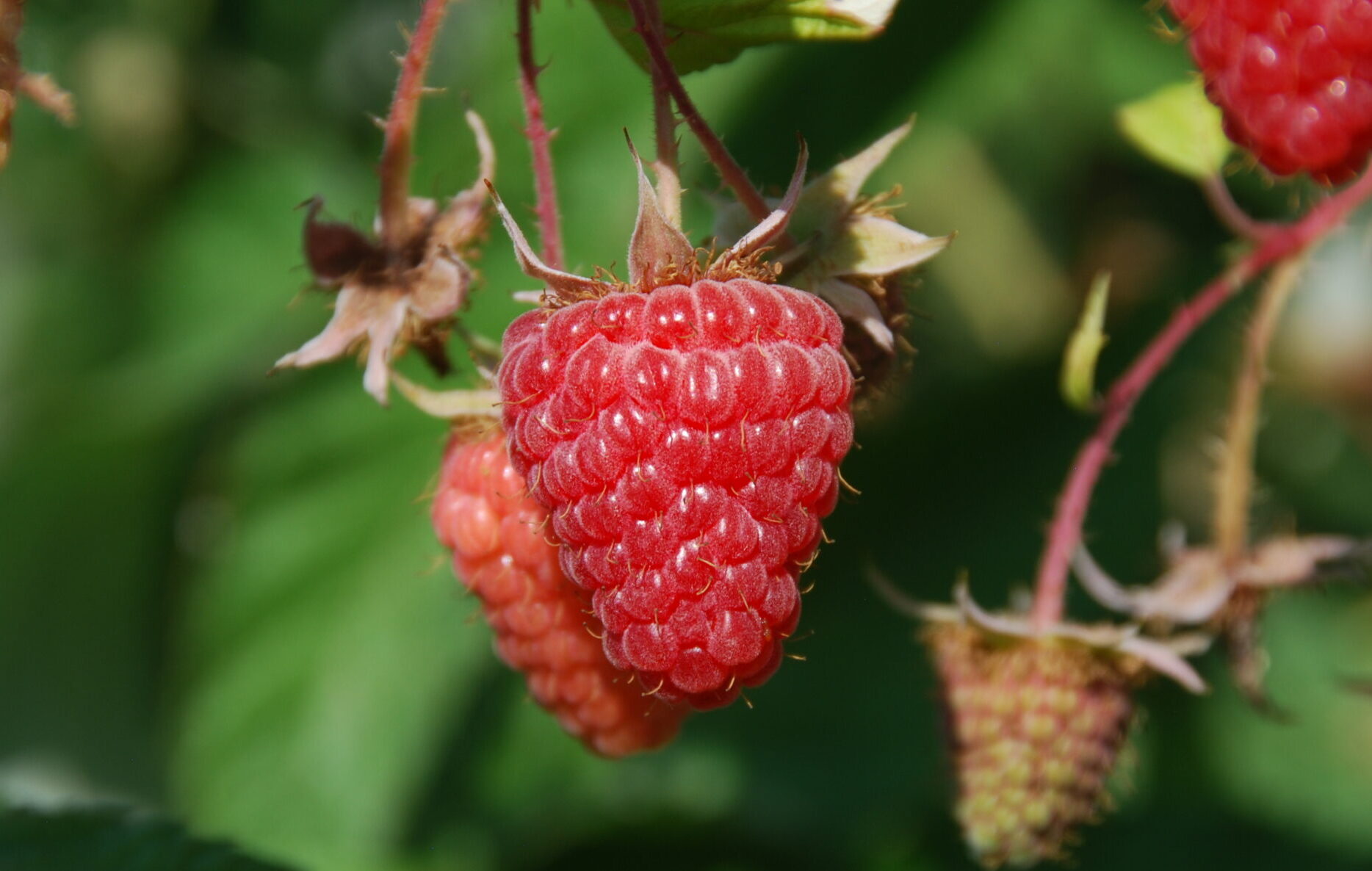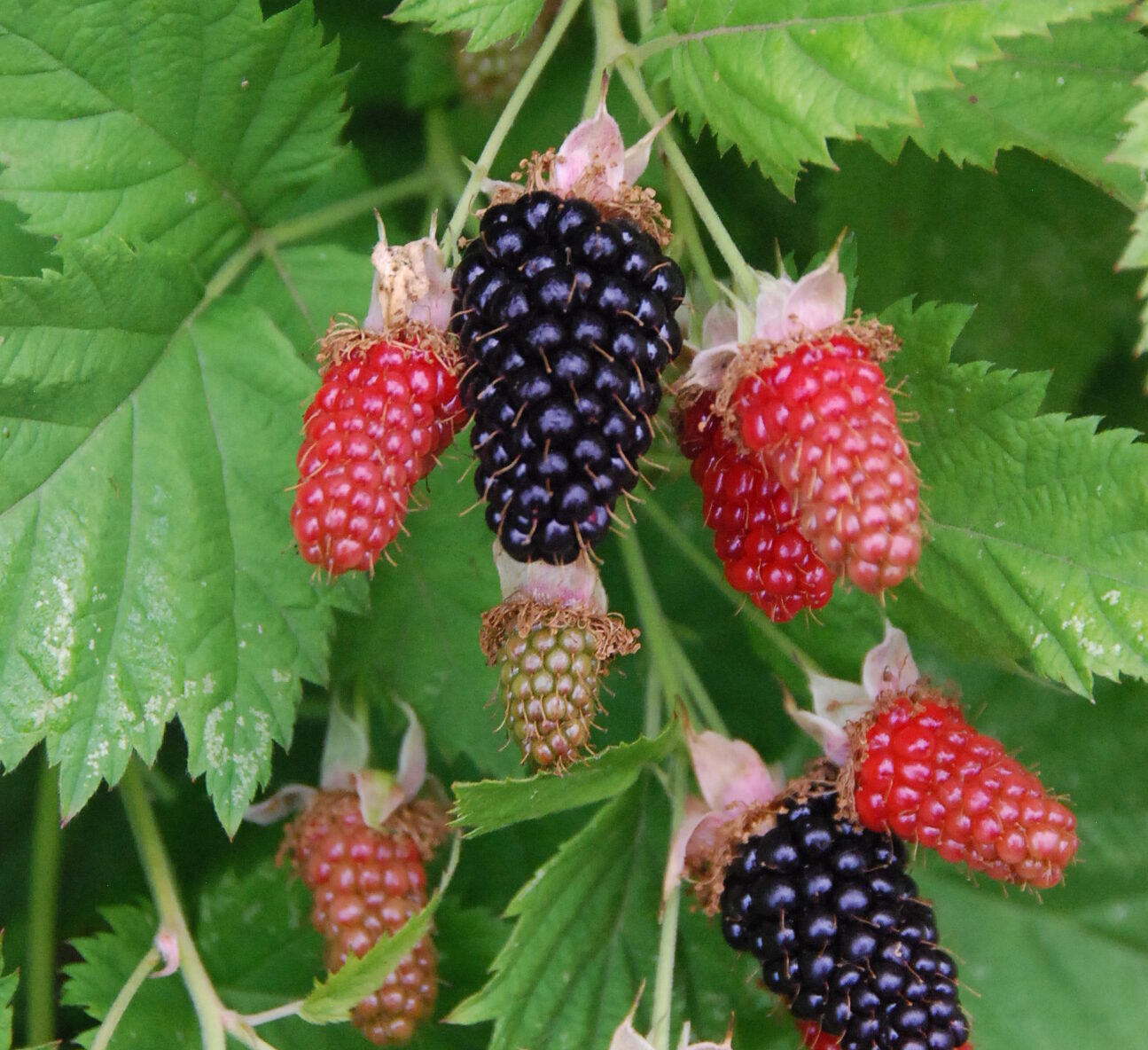Breeding Insight is excited to welcome two new species; blackberry & raspberry. Both are caneberries from the Pacific West region.
Caneberries, whose name originates from berries that grow on woody stems called canes, are a diverse group of aggregate fruits (the merger of several ovaries from separate flowers) in the genus Rubus that include blackberries and raspberries. In addition to being tasty, caneberries are an excellent source of fiber, vitamins, minerals, and phenolics. Caneberries are naturally high in anthocyanins and other phenolics that are potentially beneficial for human health.
Blackberries and raspberries are excellent to enjoy fresh and also support large markets for frozen and processed berry products. These are commonly used in desserts, jams, jellies, beverages, and as a natural flavoring and colorant. Blackberry and raspberry can be easily differentiated by their appearance and adherence of the fruit receptacle to drupelets (sections of the berry) in blackberries versus the separation of the fruit receptacle at harvest in raspberries. While red and black raspberries each primarily represent single species native to Europe and North America, blackberries are a diverse complex of at least a dozen Rubus species hybridized in the last 150 years. Important sub-classes of these woody perennial crops include primocane (first year) and floricane (second year) fruit-bearing, and distinct plant architectures that include trailing, semi-erect, and erect types of blackberry. Oregon production on floricanes occur from June to August, while primocane production occur from August to November.
The USDA-ARS breeding program at the Horticultural Crops Production and Genetic Improvement Research Unit (HCPGIRU) in Corvallis, Oregon is focused on developing improved cultivars of blackberry and raspberry for both the fresh processing markets. Situated in the Willamette Valley and adjacent to the USDA-ARS National Clonal Germplasm Repository, housing the National Caneberry Collection, researchers benefit from an ideal growing conditions and abundant genetic resources to discover and incorporate new traits into breeding populations. Each year thousands of unique berry types are evaluated to identify individuals with suitable characteristics for commercial production, and improved fruit quality and flavor. Developing machine-harvestable cultivars to assist farmers is a primary objective, along with assessment of post-harvest and shipping quality for the increasingly health and wellness conscious consumer.
Promising selections are tested in cooperation with the Oregon State University (OSU) North Willamette Research and Extension Center (NWREC) in Aurora, Oregon. At NWREC, they are placed in trials to assess long-term plant health, productivity, and fruit quality before being released to nurseries and producers across the country. The Caneberry Plant Improvement Initiative in Oregon brings together USDA-ARS and OSU plant breeders, food chemists, horticulturists, physiologists, and pathologists to address various growing challenges.






